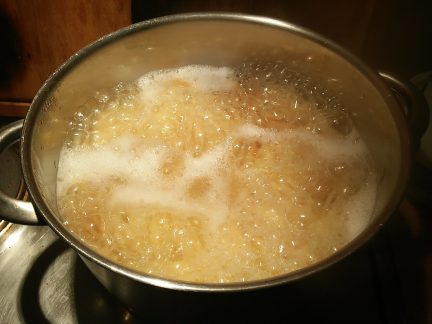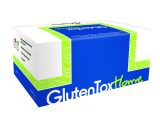It’s the beginning of the school year and time to find a fun experiment for the Science Fair!
 Science Fairs are a great way for your child to explore their world, especially when their project involves something that affects them directly. It’s also a great way for your child to reach out to their classmates and increase awareness of an everyday issue. For a child with celiac disease, the annual Science Fair can be an excellent time to learn about gluten and the realities of trying to maintain a strictly gluten-free diet.
Science Fairs are a great way for your child to explore their world, especially when their project involves something that affects them directly. It’s also a great way for your child to reach out to their classmates and increase awareness of an everyday issue. For a child with celiac disease, the annual Science Fair can be an excellent time to learn about gluten and the realities of trying to maintain a strictly gluten-free diet.
Cross contamination is a very real concern for people with celiac disease, and we’ve developed several science fair projects that use GlutenTox Home to demonstrate the prevalence of cross-contamination in everyday circumstances. One of our favorite gluten-free science fair projects is a simple experiment using gluten-free pasta.
Be sure to read through our tips at the end of the
article carefully before beginning your project!
Your Hypothesis: Cooking gluten-free pasta in the same water that has previously been used to boil traditional gluten-full pasta will contaminate the gluten-free pasta and make it unsafe for people on a gluten-free diet.
What you’ll need:
- Two clean pots, big enough to boil at least one serving of pasta each
- Water (tap is fine)
- Two servings of gluten free pasta
- One serving of gluten-containing pasta (ideally a different shape than the GF pasta)
- Two strainers or colanders, at least one of which is new
- One 5-test GlutenTox Home kit
You won’t be eating any of this pasta, so don’t worry about things like salt or oil. In fact, it’s better not to include them – Science Fair Rule #1, Control Your Variables! By avoiding salt and oil, you avoid the need to test those ingredients for gluten.
Directions for conducting tests with GlutenTox Home are included in the kit.
The following steps are a suggestion, but feel free to modify the experiment in whatever way you’d like.
 Step 1
Step 1
Test the water you will be using to boil both types of pasta with a GlutenTox Home test (T1).
Step 2
Divide the water between the two pots; bring to a boil.
Step 3
Add a serving of gluten-full pasta to one pot and a serving of gluten free pasta to the other. Make sure that you don’t confuse the pots!
Step 4
Once the gluten free pasta is cooked, take it out and set it and the pot of water you used to the side. Do the same with the gluten-full pasta.
Note 1! Save the water from each pot and be careful to keep them separate and clearly labeled
Note 2! You’ll want to use separate colanders to strain the two pastas. If you keep a gluten-free kitchen, use the new colander for the wheat pasta (and then throw it away or donate it). If you keep a gluten-full kitchen, use the new colander for the gluten-free pasta (and then do whatever you’d like with it).
Step 5
Test the gluten-free pasta for gluten (T2).
Step 6
Test the gluten-full pasta for gluten (T3).
Step 7
Once the water from the gluten-full pasta has cooled to room temp, give it a stir and then test it for gluten following the instructions for testing liquids (T4). You can use the provided spoons or a scale to weigh 1mL.
Step 8
Bring the same water from the gluten-full pasta pot back to a boil in a clean pot. Add a serving of gluten free pasta and cook until done.
Step 9
Test this second batch of gluten free pasta (T5). Is it still truly gluten-free?
Tips for successful testing!
- We suggest you test for gluten at the lowest threshold of 5ppm. Most importantly, be consistent with all your tests.
- Prepare your samples carefully and organize all your materials before you begin!
- It’s important to analyze the test strips promptly at 10 minutes. After that, results can appear to shift: faint positives can fade or appear, and strong positives will fade a bit over time.
- Taking a picture of the test strips at the ten minute mark is a great way to document your findings.
- If you want to repeat the experiment, you’ll need to plan for purchasing additional tests.
We always love learning about other ideas for gluten-free science fair projects; please feel free to call us or write in any time to discuss your student’s plans for his or her own gluten-free experiments. We may be able to troubleshoot or provide suggestions on how to structure the experiment for maximum gluten-free learning.
If your child has already completed his or her project, we’d love to see it! Email us details if you’d like your child to be considered for a spot as a featured guest blogger on our site.

Need to test for gluten at home?
Commercial-quality, user-friendly. Clear results in less than 20 minutes.


